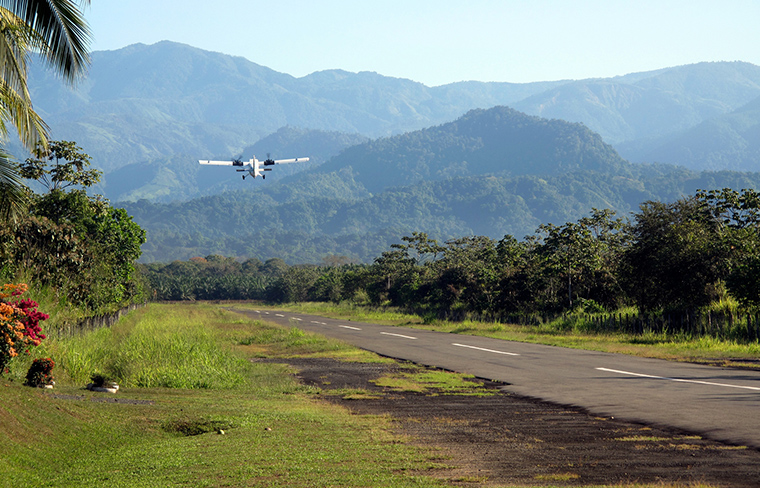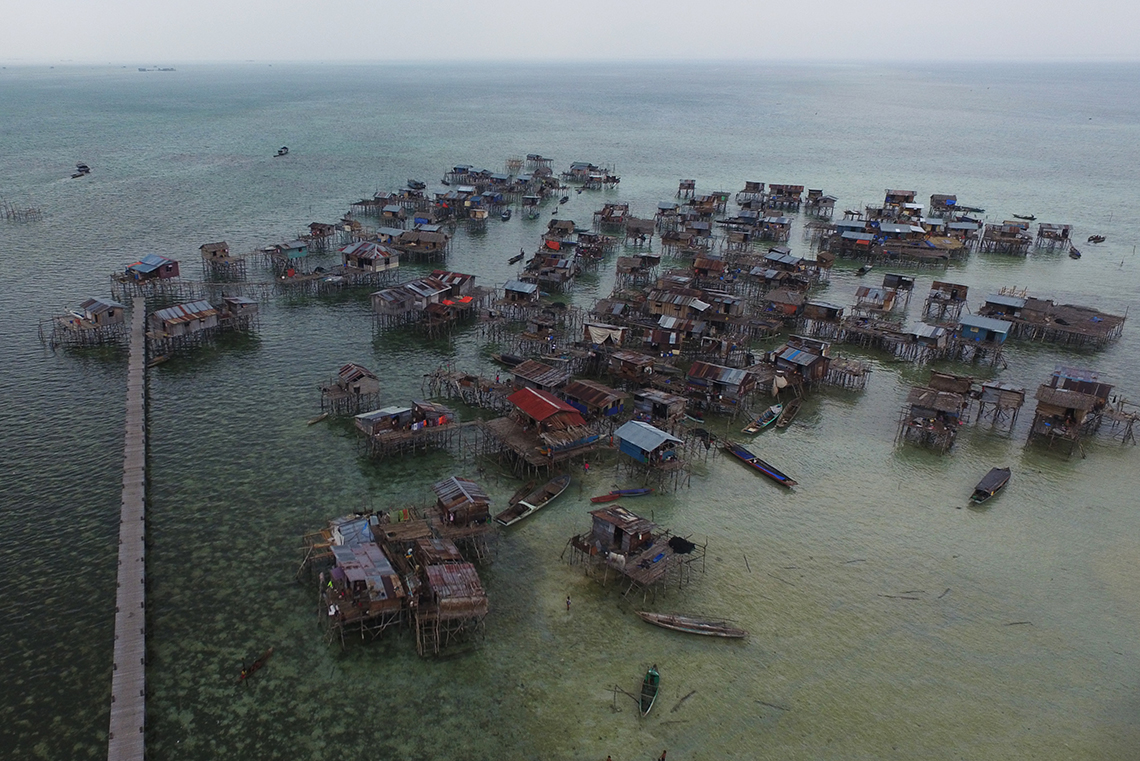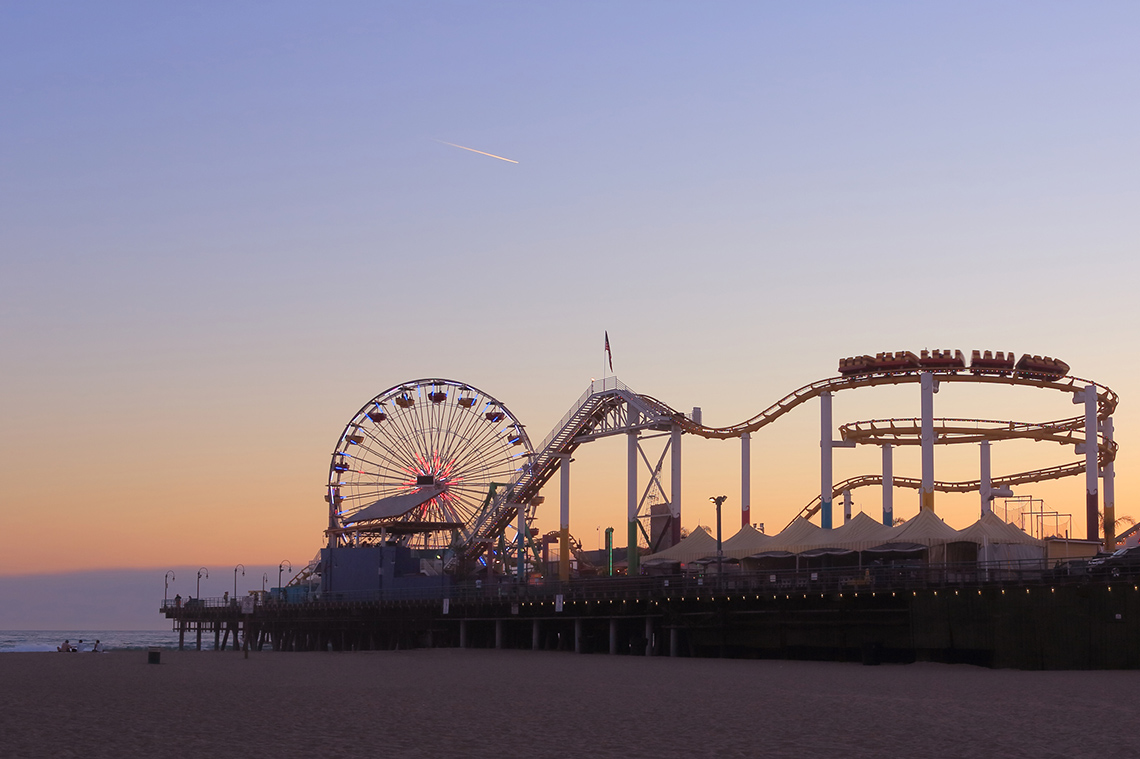Minds On
Making predictions
Brainstorm
Share your thoughts
Explore the following image. What do you predict will happen next? What conclusions can you make?
 Description
Description
A small airplane taking off from an airport. Behind the plane there is a runway. In the distance of the photograph is a landscape of grassy hills and small mountains. It is a sunny day and the ground around the small, paved runway is made up of green grass, trees, and plants.
Record your predictions and conclusions in a short audio clip, in your notebook, on the computer, or in an organizational tool of your choice.
Action
Making inferences
As readers, we can make inferences about texts using stated and implied ideas from the texts as evidence.
This helps us to read between and beyond the lines of the information that we’re presented with.
For example, in the Minds On, you practiced making inferences about the image of a small airplane. To do this, you used a combination of clues from the image and/or image description as well as your prior knowledge.
Let’s practice making inferences with the following fictional passage.

After a quick breakfast, the two friends made their way down to the river. They could hear the birds chirping and a dog barking in the distance. As the friends approached their canoe, the fog was clearing, and they could see that the dock line was slackened and frayed.
Use the clues from the passage to respond to the following questions. You can record your inferences using a method of your choice.
- Where are the teens going? How do you know?
- What gear do the teens have? How do you know?
- Where do the teens live? How do you know?
- What time of year is it? How do you know?
Nonfiction text inferences
Explore the following passage about the Bajau community of Southeast Asia.

The Bajau peoples live in wooden huts built on stilts on top of coral reefs and spend most of their days in handmade boats, called pirogues, made from hollowed out logs. Bajau children as young as 4 years old can effectively catch fish, octopus and lobster using only nets and spears. They take their catch into the village of Semporna and trade for other food and necessities.
What can you infer from the passage?
Keep in mind that an inference is not a wild guess. Be sure to use clues from the text as well as your background knowledge, to draw a reasonable conclusion. You can record the inferences you make using a method of your choice.
- How would Bajau children catch the fish, octopus and lobster they trade in Semporna?
- What might the Bajau community trade for their catch? How do you know?
- How do Bajau people make their pirogues? How do you know?
- What other conclusions or predictions can you make about the Bajau communities based on the information you have been given?
Think about your learning
Use the following questions to reflect on your learning so far. You can record your responses using a method of your choice.
- Which text have you most enjoyed making inferences about? The airplane in the Minds on, the fictional text about the teens, or the nonfiction text about the Bajau community? Why?
- If someone were to ask you to define inferring, what would you say? How would you describe it?
Consolidation
Create your own inferential questions
Let's practice creating inference questions.
Explore the following texts. Your task is to come up with 3-5 inferential questions for one of the three texts. Be sure that your questions require someone to "read between the lines."
If possible, share your questions with a partner. Can they answer them?
Option #1: Inferring from an image
The following picture is of a small amusement park on a beach. There is a Ferris wheel, a small roller coaster, some covered tents, and a few other fair-type rides in the background. The image is taken in the evening, as the sun is setting.

Option #2: Inferring from a fictional text
One bright, sunny day there were two sisters sitting in their kitchen eating sandwiches when something shiny and bright caught their attention. It was an old and rusty, gold key. They rushed over and picked it up with curiosity etched on their faces. What did the key open? They had to find out!
The sisters searched the house together from top to bottom. They even searched the yard! That’s when they noticed an old, battered chest behind the garden shed. That had to be it! They ran over, eager to reveal the contents inside. When the key opened the lock, they lifted the lid to see an old, tattered map that read, “Bring a shovel and follow the trail into the woods!.” It was a treasure map!
Option #3: Inferring from a nonfiction text
Jennifer Keesmaat is an urban planner, and the former Chief Planner of the City of Toronto. One of the things that she is recognized for is her work in urban design guidelines across Canada and around the world. She is passionate about creating city spaces that are accessible, livable, and safe.
Reflection
As you read the following descriptions, select the one that best describes your current understanding of the learning in this activity. Press the corresponding button once you have made your choice.
I feel...
Now, expand on your ideas by recording your thoughts using a voice recorder, speech-to-text, or writing tool.
When you review your notes on this learning activity later, reflect on whether you would select a different description based on your further review of the material in this learning activity.